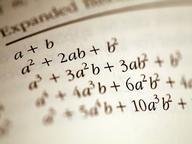Quiz Answer Key and Fun Facts
1. A matrix is defined as a rectangular array of numbers or other elements. This means its shape (called its dimension) can be described by stating the number of rows and columns in which the elements are arranged. A matrix A is said to have dimension mxn. Which of the following statements about matrix A is true?
2. If a matrix A has dimension mxm, what kind of matrix is it?
3. A vector is a matrix for which there is only a single row or a single column. M is a 4x1 matrix, while N is a 1x4 matrix. Which of them could be described as a vector?
4. To add matrices, you simply add the corresponding elements. Which of the following is a pair of matrices that can be added?
5. How can you recognise an Additive Identity Matrix?
6. Multiplication involving matrices is a bit more complicated than it is with numbers. The cross product of two vectors, A x B, can only be calculated under what condition?
7. Which familiar property of number calculations does NOT apply to matrix calculations, with a few exceptions? Assume that all operations indicated are in fact possible.
8. What is meant by the multiplicative inverse, A^-1, of a matrix A?
9. Sometimes two vectors can be multiplied in such a way that the answer is a scalar (ordinary number), not a matrix. What is the name given to the result of this procedure?
10. How is the operation of matrix division (A divided by B) performed?
Source: Author
looney_tunes
This quiz was reviewed by FunTrivia editor
crisw before going online.
Any errors found in FunTrivia content are routinely corrected through our feedback system.

